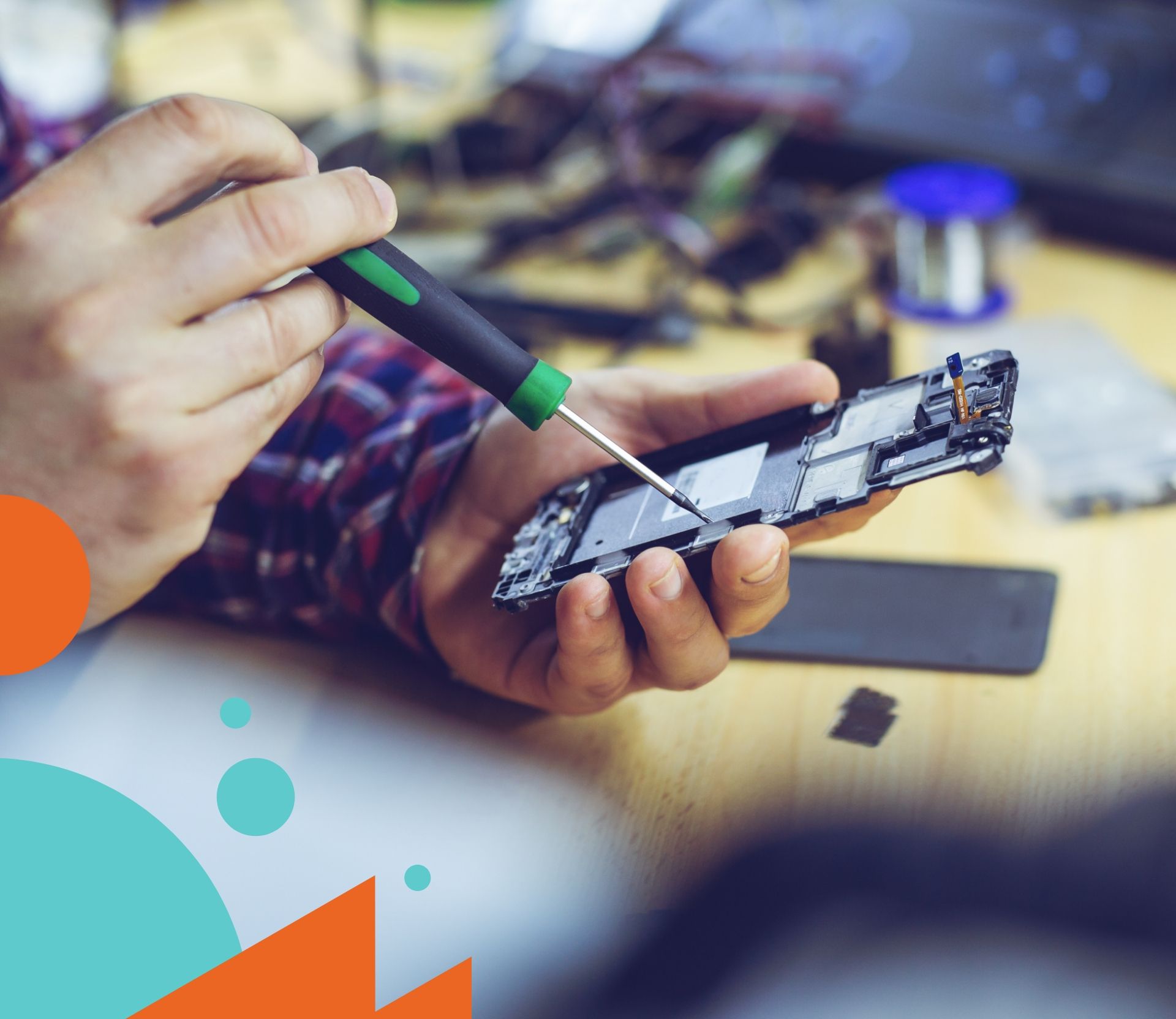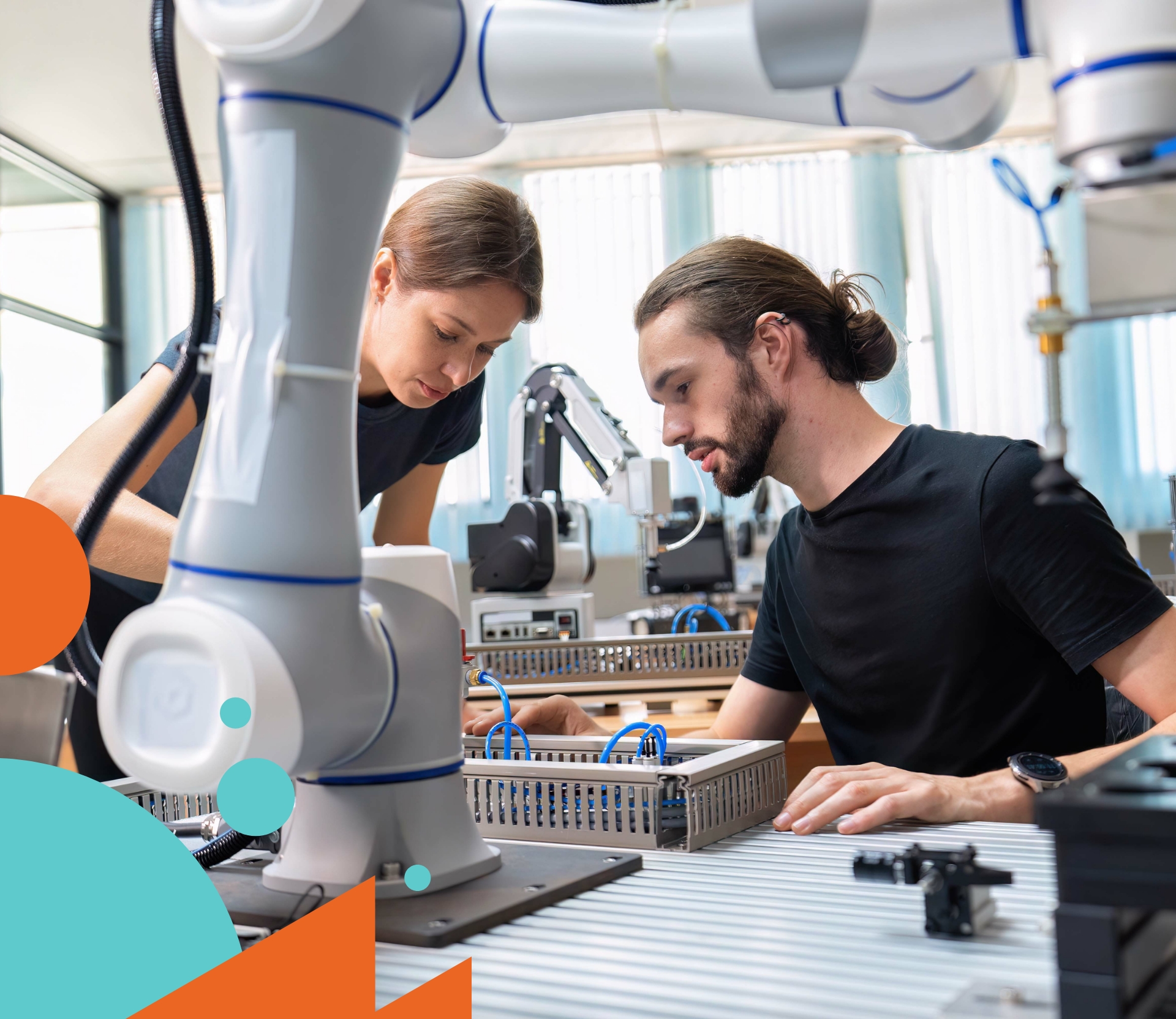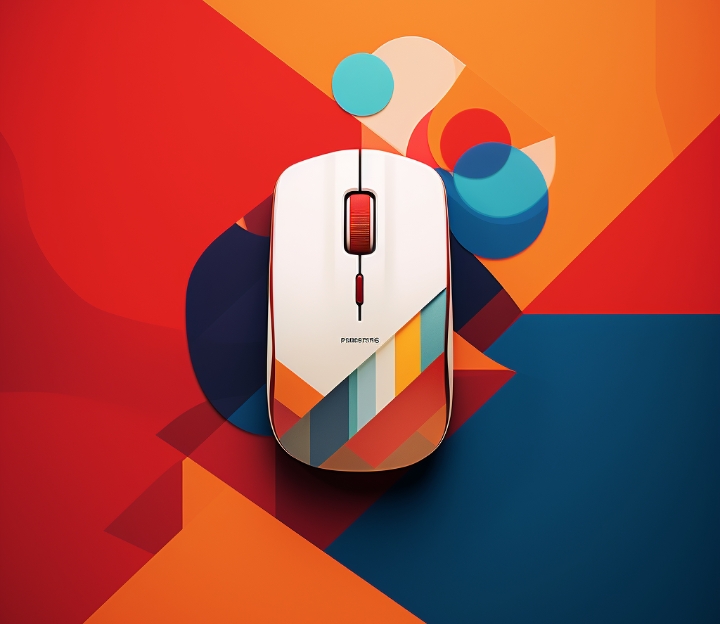Repair is in our DNA
For us, a circular economy involves undertaking specific actions that keep value and resources in circulation. See examples of how we implement CE in practice.
million tons
of e-waste
annually
trillion EUR
to be added by CE
by 2030
Fixit: at the heart of the circular economy
A circular economy goes beyond just recycling. It encompasses specific strategies designed to retain resources at their highest economic value efficiently. The Fixit business model provides support across all R9 strategies.
With our own decarbonization plan, we assist manufacturers in developing their own plans and minimizing emissions, supporting the transition to more sustainable production practices.
Fixit’s circular radar, supported by AI technology and models, continuously analyzes our customers’ experiences and identifies opportunities for circular strategies – in both services and component design.
By reusing the maximum amount of packaging sent by end customers, we don’t generate demand for new packaging, thereby reducing waste.


Partnership for circularity
Forming partnerships to jointly create a positive impact on the industry and the environment
Businesses should work together to overcome barriers to access a truly circular economy. Therefore, collaboration is a core value in our organization. We strive to form partnerships with other companies, organizations, and communities to jointly create a positive impact on the industry and the environment.


Innovation, industry, infrastructure
Continually refining skills to provide cutting-edge repair solutions
Our team of experienced technicians and engineers are always fine-tuning their skills to provide cutting-edge repair solutions. Rather than discarding equipment, we can extend its lifespan, thereby reducing electronic waste and lessening its environmental impact. This approach enhances the efficiency of resource use.


Customer care and repair awareness
Nearly 20% of devices sent to service do not require repairs
Almost one in five devices sent to service do not require repairs. Through a series of verification procedures and proactive communication by our customer care department, we support customers in checking or repairing their device independently, thus building repair awareness and reducing emissions associated with transporting devices that do not need to reach us. This is an example of action that brings both economic and ecological benefits.


Responsible production and consumption
Minimizing resource use by extending product life cycles
We advocate for the conscious choices of more durable and easily repairable products by educating consumers and supporting organizations in creating devices designed for longevity.


Circular design and ecodesign
70% of the environmental impact of a product can be avoided at the design stage
Leveraging our experience, we assist manufacturers in designing devices in a circular manner, making them easier to repair, disassemble, and more durable. We also support manufacturers to ensure their products remain in circulation for longer.

How it works
Circular services and business models
Below you will find a description of the circular strategies we at Fixit use on a daily basis.
Circular business model support

Knowledge & experience
We share our vision
Our experienced experts regularly share their knowledge in reports, expert articles and at conferences. If you are looking for expertise and practical examples of using circularity and customer experience implementation, reach out us.